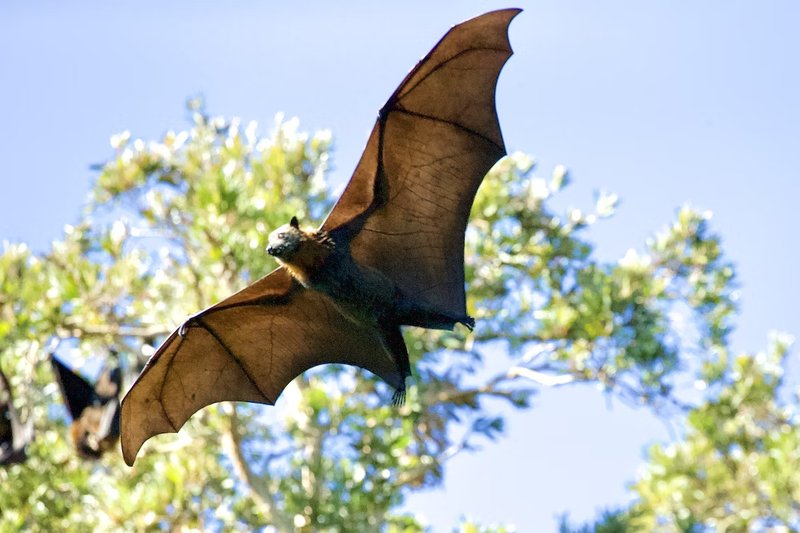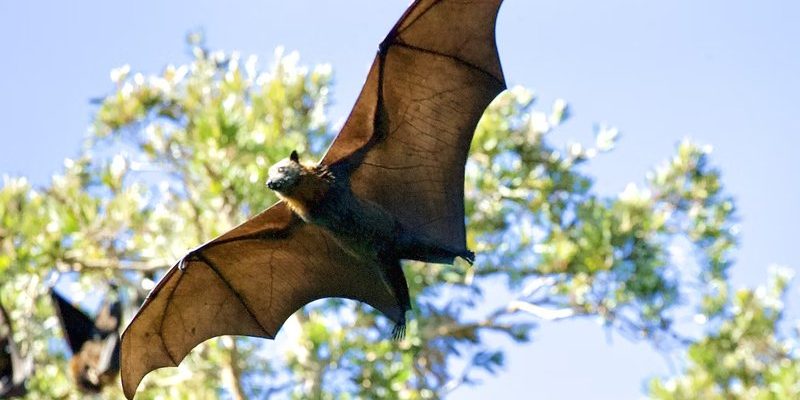
Many myths surround fruit bats, leading to misconceptions that can complicate our understanding of these fascinating creatures. They don’t just hang around in dark caves waiting to scare you—these animals are actually vital for pollination and seed dispersal in many tropical regions. So let’s set the record straight and explore some common myths about fruit bats, busting through the fog of misunderstanding together!
Myth 1: All Fruit Bats Are Dangerous
One of the biggest misconceptions about fruit bats is that they are dangerous creatures. The truth? Most fruit bats are pretty harmless. While they can carry diseases like any wild animal, the risk to humans is quite low. It’s important to remember that these bats primarily feed on fruit, nectar, and flowers. They’re much more interested in finding their next meal than causing any trouble for humans.
Honestly, just like how you wouldn’t label all dogs as aggressive because of a few bad apples, you can’t generalize that all fruit bats are dangerous. The majority of them are shy and prefer to keep their distance from people. If you ever come across a fruit bat, you might notice that they tend to hang out in trees, diving in for fruits and avoiding human interaction. They’re like the introverted friends of the animal world!
Why They Get a Bad Reputation
So why do fruit bats have such a bad reputation? A lot of it has to do with the way they look and their association with darker themes in folklore. Bats, in general, have long been tied to spooky stories and myths. When they emerge at dusk, their winged silhouette can be a little eerie, especially to those unfamiliar with them.
It’s interesting to note that fruit bats actually have large, expressive eyes and fur that can come in a variety of shades. When you take a closer look, they’re not so frightening after all! In fact, many people find them quite charming once they learn more about their behaviors and lifestyles.
Myth 2: Fruit Bats Are Just Flying Rodents
You might have heard someone call fruit bats “flying rodents.” That’s another misconception that needs clearing up. Fruit bats belong to the order Chiroptera, which makes them closely related to primates, not rodents. They share a more recent common ancestor with humans than with mice. Just let that sink in for a moment.
You see, fruit bats don’t have the same body structure or behaviors as rodents. Instead, they have a unique anatomy suited for their fruit-eating lifestyle. Their long wingspans allow them to glide gracefully from branch to branch in search of food. It’s like comparing apples and oranges—both fruits, but entirely different in nature!
Social Creatures, Not Solitary
Another thing that sets fruit bats apart is their social nature. Unlike many rodents that tend to be solitary, fruit bats roost in large colonies that can number in the thousands. These colonies provide safety in numbers, keeping them warm and helping them communicate while they rest. The social dynamics are fascinating!
You might think of a bustling city when you picture a fruit bat colony. They chat with each other through a range of vocalizations, almost as if they’re sharing the latest gossip. It’s not just a gathering for safety; it’s also a vibrant community where they bond, care for their young, and even engage in play.
Myth 3: Fruit Bats Are Pests
Let’s address another frequent misconception: fruit bats as pests. Sure, they may munch on crops from time to time, but calling them pests oversimplifies their role in our ecosystem. In fact, fruit bats are nature’s gardeners! By feeding on fruit, they help disperse seeds and pollinate plants. This, in turn, promotes biodiversity, which is crucial for a healthy environment.
You might be wondering how that all works. When a fruit bat eats fruit, they often swallow the seeds whole. These seeds can then pass through their digestive system unharmed. When they land elsewhere—well, nature takes care of the rest. It’s a win-win: they get a meal, and the plants get a chance to grow in new areas!
Benefits to Agriculture
While it can be frustrating for farmers when fruit bats invade their fields, it’s essential to recognize their benefits. Many fruit bat species actually aid in the production of different crops like bananas and avocados. Without them, some plants might struggle to thrive.
Fostering a balance is key. Encouraging fruit bats to thrive in their native habitats can reduce the need for pesticides and encourage healthier ecosystems overall. So next time you hear someone complaining about fruit bats, consider sharing the benefits they bring to agriculture and the environment!
Myth 4: Fruit Bats Are All the Same
Another common myth is that all fruit bats are alike. In reality, there are over 200 species of fruit bats, known as flying foxes, and they come in various shapes and sizes. Some have wingspans of over six feet, while others are much smaller. Each species brings something unique to its habitat.
For instance, the Seychelles flying fox is famous for its stunning appearance, with vibrant colors and a prominent snout. On the other hand, the Giant fruit bat is known for its impressive size and can often be found in large groups, displaying impressive social behaviors. It’s like having a diverse family reunion—each relative brings something special to the gathering!
Adaptations to Their Environment
These various species have developed different adaptations that help them thrive in their specific environments. Some may prefer tropical forests, while others are more suited for dry habitats. These adaptations allow them to flourish across different landscapes.
Take the Little red flying fox as an example. This small bat can tolerate higher temperatures and often roosts in eucalyptus trees. Meanwhile, the Spectral bat prefers tropical rainforests and has unique features that help it navigate in dense foliage.
Myth 5: Fruit Bats Are Nocturnal
You might be surprised to learn that not all fruit bats are strictly nocturnal. While many species are active at night, some are crepuscular, meaning they thrive during twilight hours—dawn and dusk. This behavior can change based on the availability of food and environmental factors.
This is particularly fascinating because it means fruit bats may have different feeding habits depending on the season and climate. For instance, in areas where fruits are plentiful, they may be more active during the day. It’s like adjusting your schedule around the best local farmers’ market—going when the best produce is available!
Light and Activity Preferences
Their activity patterns can affect their social structures, too. Often, you’ll find fruit bats flying together in groups during these active hours. It’s a beautiful sight, watching them soar gracefully against the evening sky. The chance to witness this majestic display can really change how you view these creatures.
So, the next time you hear the term “nocturnal creatures” associated with all bats, remember that fruit bats are a little more flexible than you might think!
Fruit bats are often misunderstood, but they play an essential role in the ecosystems they inhabit. By debunking these common myths, we can better appreciate their contributions to biodiversity and agriculture. They may look a little strange, but these creatures are more like the gentle giants of the animal world than the monsters of our imagination.
Understanding fruit bats helps us to respect and protect them. As we learn more about their lives, we can also embrace their role in nature and work towards coexisting peacefully. So next time you hear a story about fruit bats, remember that there’s more beneath the surface. They’re not just mysterious creatures in the night; they’re vital members of our world!

